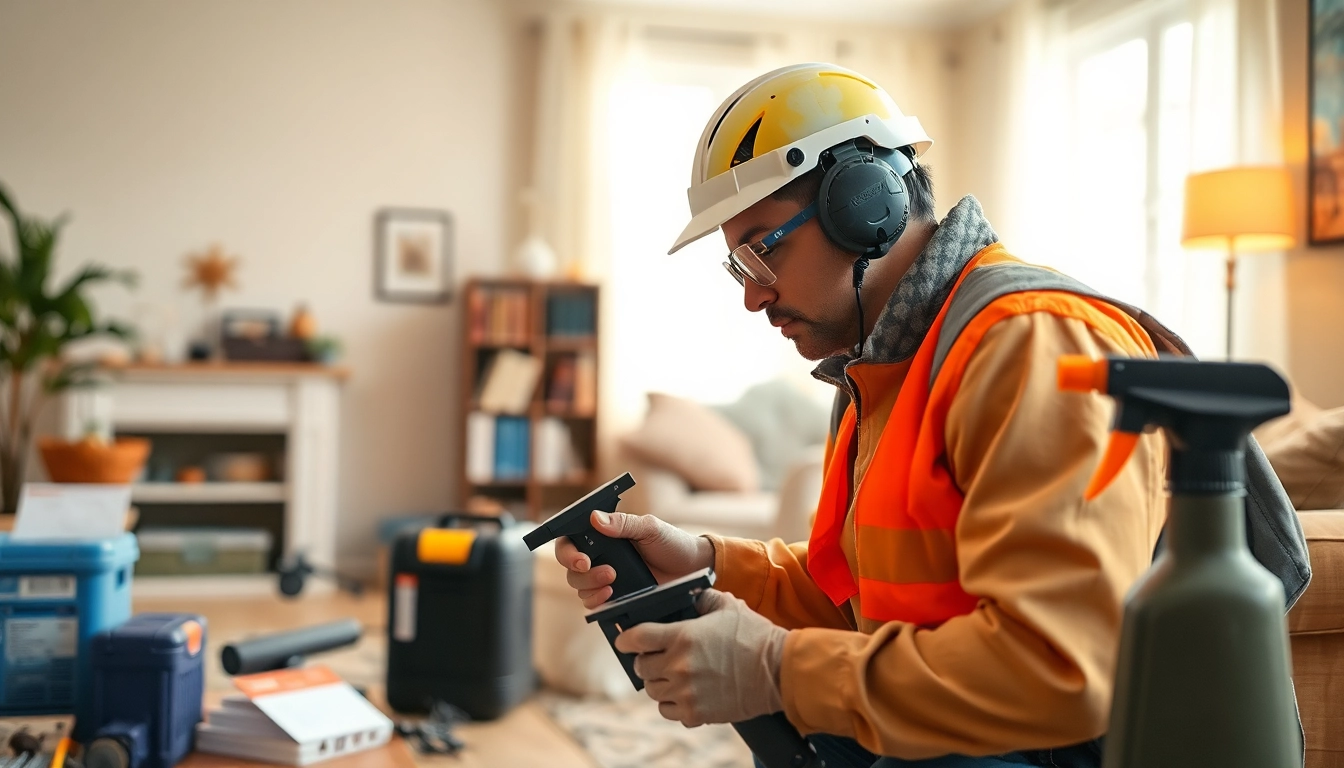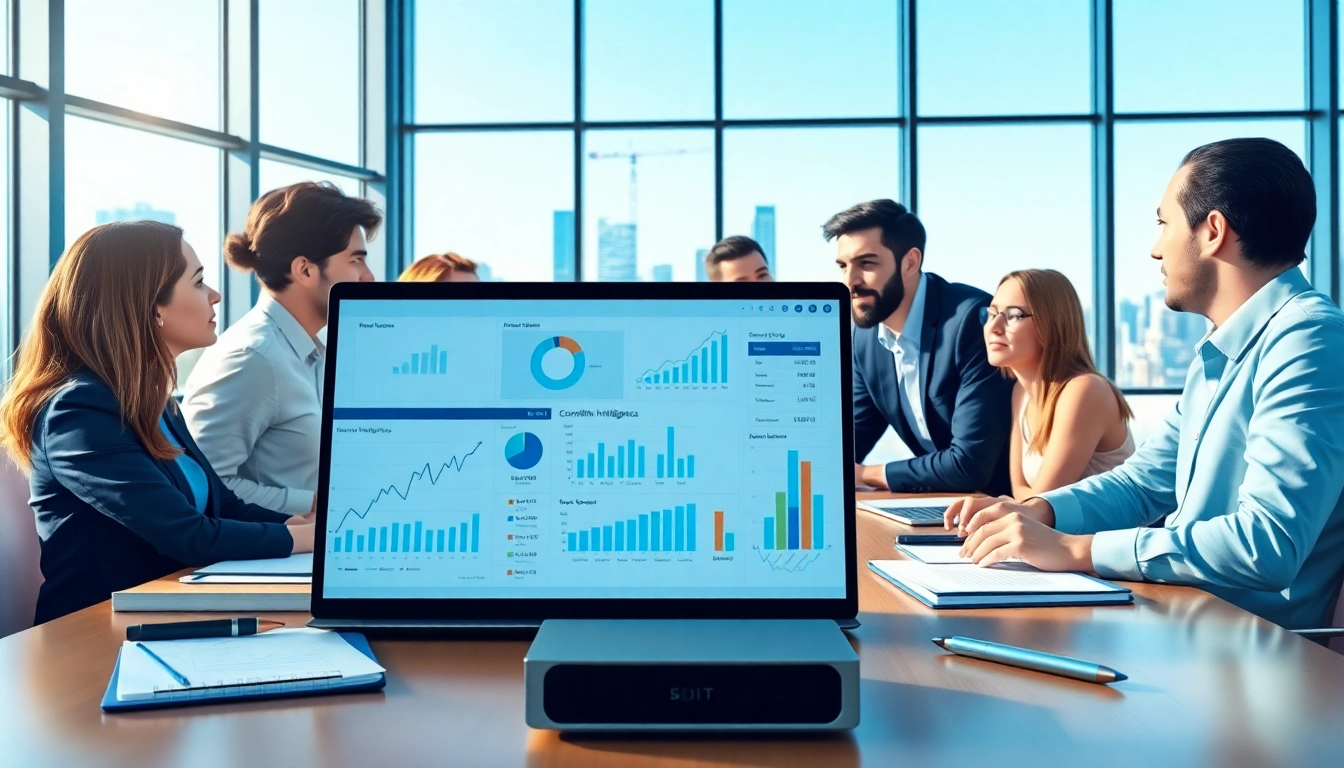Understanding Pest Management
Pest management is a crucial component of maintaining healthy living environments, whether in residential, commercial, or agricultural settings. This multidisciplinary approach not only seeks to eliminate pests but also focuses on preventing their return through ecological and sustainable practices. Those looking for effective methods can explore several strategies under the umbrella of pest management, which emphasizes a balance between immediate control and long-term solutions.
What Is Pest Management?
Pest management refers to a combination of practices and methodologies aimed at controlling and minimizing damage caused by pests. This includes everything from insects and rodents to unwanted plants that can threaten agricultural outputs or the comfort of a household. The goal of pest management is to reduce pest populations to acceptable levels, using methods that are environmentally friendly and economically viable.
The Importance of Integrated Pest Management
Integrated Pest Management (IPM) is an essential principle within pest management that seeks to maximize efficiency and sustainability. The IPM approach recognizes that a diverse set of techniques, including biological control, habitat manipulation, and the use of resistant plant varieties, leads to a more effective pest control system. By focusing on prevention rather than reaction, IPM helps to maintain biodiversity, reduce chemical exposure, and ensure that pest control strategies are economically sound. The U.S. Environmental Protection Agency (EPA) asserts that IPM combines knowledge of pest biology with control methods to minimize risks to people and the environment.
Common Pest Management Techniques
Several techniques are employed within pest management frameworks, which can be tailored based on specific pests or environments:
- Biological Control: Utilizing natural predators or parasites to control pest populations.
- Cultural Control: Modifying farming or landscaping practices to reduce pest populations.
- Mechanical Controls: Using barriers, traps, or manual removal to directly eliminate pests.
- Chemical Control: Using pesticides as a last resort, focusing on targeted and minimal applications to reduce environmental impact.
- Monitoring: Regularly assessing pest populations to determine effectiveness and adjust strategies as necessary.
Types of Pests and Their Impact
Identifying Common Household Pests
Understanding household pests is imperative for effective management. Common pests include:
- Ants: Social insects that often invade kitchens in search of food.
- Termites: Wood-destroying insects that can cause significant structural damage.
- Rodents: Mice and rats that can carry diseases and contaminate food supplies.
- Bedbugs: Pests that feed on human blood and can be challenging to eradicate.
Identifying these pests early can significantly influence the success of management strategies, as treatment will vary based on the pest’s behavior and lifecycle.
The Economic Impact of Pest Infestations
The economic ramifications of pest infestations can be staggering. In the agricultural sector, losses can amount to billions of dollars annually due to crop damage and the costly implementation of pest control measures. Similarly, in residential settings, pest infestations necessitate expensive extermination services and repairs for any resulting damage. For instance, the National Pest Management Association reported that termites alone caused over $5 billion in damages annually in the United States. Effective pest management becomes not just a preventive measure but a necessary business strategy.
Health Risks Associated with Pests
Pests are not only a nuisance; they can pose significant health risks. Rodents are known carriers of diseases like Hantavirus and salmonella, while cockroaches can exacerbate asthma and allergies. Furthermore, insects like mosquitoes are vectors for conditions such as West Nile virus and Zika virus. Public health initiatives often emphasize the importance of pest management as critical to maintaining community well-being.
Best Practices for Effective Pest Management
Preventative Measures for Home Protection
Effective pest management begins with prevention. Homeowners can take several precautions to deter pests:
- Sealing cracks and openings to prevent entry.
- Regularly cleaning and organizing spaces to minimize food sources.
- Properly storing food and waste in sealed containers.
- Maintaining landscaping to avoid creating pest habitats.
Implementing these preventative measures can dramatically reduce the likelihood of infestations, saving time and resources.
Utilizing Eco-Friendly Pest Control Methods
More homeowners and businesses are turning to eco-friendly pest control methods that minimize chemical exposure. Some of these methods include:
- Essential Oils: Natural oils can repel or kill pests without harmful side effects.
- Neem Oil: Extracted from the seeds of the neem tree, this oil disrupts the lifecycle of pests.
- Traps: Simple traps can catch pests without chemical intervention.
These methods align with sustainable practices while effectively managing pest populations.
When to Seek Professional Pest Management Services
While many pest management strategies can be conducted independently, circumstances may warrant professional intervention. Homeowners should consider calling in experts when:
- Pest populations are persistent and overwhelming.
- Pests pose a direct health risk to family members or pets.
- Infestations damage structural integrity or threaten valuable assets.
- Home remedies have proven ineffective.
Professional pest management services are equipped with the knowledge, tools, and products necessary to handle severe infestations safely and effectively.
Tools and Techniques in Pest Management
Essential Tools for Pest Management Professionals
Pest management professionals utilize a wide array of tools to effectively control pest populations. These tools include:
- Insecticides: Chemical solutions designed to kill or repel pests.
- Traps: Various types of traps for capturing rodents, insects, or other pests.
- Monitoring Devices: Tools to observe pest activity and determine intervention strategies.
- Protective Gear: Necessary equipment to ensure safety while applying treatments.
Professional-grade tools are essential for effectively managing pest populations while ensuring user safety.
Technological Advances in Pest Control
The pest management field has also benefited from technological advancements. Innovations include:
- Smart Traps: Equipped with sensors and connectivity to monitor pest activity in real-time.
- Drones: Used for surveying large agricultural fields to identify infestations quickly.
- Data Analytics: AI algorithms can analyze pest behavior patterns to predict outbreaks.
By leveraging technology, pest management becomes more efficient and effective, enabling timely interventions.
How to Apply Pest Control Solutions Safely
Applying pest control solutions requires an understanding of safety protocols to protect users and the environment. Essential tips include:
- Always read and follow product labels carefully.
- Wear protective gear, such as gloves and masks, when applying chemicals.
- Ensure pets and children are kept away during treatments.
- Dispose of unused or expired pest control products responsibly.
By adhering to safety guidelines, individuals can minimize risks while effectively managing pest issues.
Measuring Success in Pest Management
Monitoring and Assessing Pest Control Effectiveness
Evaluating pest management strategies is vital to understand their effectiveness. Key performance indicators (KPIs) may include:
- Reduction in pest population counts.
- Decrease in reported pest-related health concerns.
- Cost-effectiveness of control methods relative to pest damage.
- Feedback from occupants or customers about pest presence.
Regular monitoring ensures that pest control efforts are achieving desired results and allows for timely adjustments to strategies.
Feedback from Pest Management Professionals
Input from professionals within the pest management industry can provide valuable insights. Regular collaboration between pest managers and clients can yield success stories and areas for improvement. These interactions not only foster better practices but also enhance client satisfaction by addressing concerns more efficiently.
Long-term Strategies for Successful Pest Management
Long-term pest management success hinges on adopting a proactive, adaptive mindset. Strategies to consider include:
- Continuous education on new pest threats and solutions.
- Maintaining an integrated approach that merges various techniques.
- Regularly reviewing and updating pest management plans based on effectiveness.
- Engaging in community initiatives to raise awareness and prevent widespread issues.
By adopting these long-term strategies, individuals and organizations can enjoy a pest-free environment while contributing to broader ecological health.



